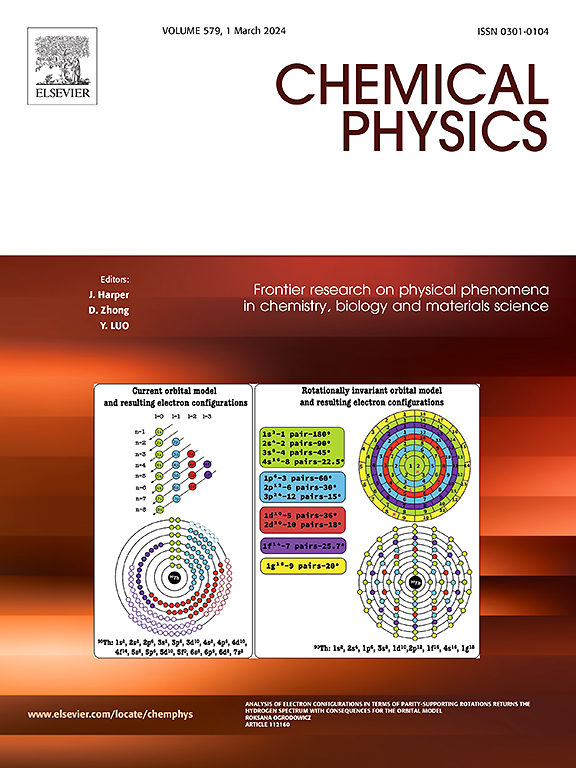Cu和Ag原子与I、II和XII族元素相互作用的二体和三体色散系数
IF 2
3区 化学
Q4 CHEMISTRY, PHYSICAL
引用次数: 0
摘要
由于长程相互作用在冷原子物理中的广泛应用,对其进行深入分析和研究的兴趣与日俱增,使其成为一个引人注目的研究领域。在这项工作中,我们评估了铜和银原子与第一类(Li、Na、K、Rb、Cs 和 Fr)、第二类(Be、Mg、Ca、Sr 和 Ba)、第十二类(Zn、通过计算 C6(二体)和 C9(三体)vdW 色散系数,可得出第二组(Be+、Mg+、Ca+、Sr+ 和 Ba+)和第十二组(Zn+、Cd+ 和 Hg+)的单电荷离子以及第二组(Be+、Mg+、Ca+、Sr+ 和 Ba+)和第十二组(Zn+、Cd+ 和 Hg+)的单电荷离子。为了获得这些 C6 和 C9 系数,我们使用了适当的相对论方法和过态总和方法来评估所考虑原子的动态偶极极化率。为了确定结果的准确性,我们将评估出的铜原子和银原子的静态偶极极化率及其主导跃迁的振子强度与现有文献进行了比较。C6 色散系数的计算值也与之前报告的结果进行了比较。本文章由计算机程序翻译,如有差异,请以英文原文为准。
Two- and three-body dispersion coefficients for interaction of Cu and Ag atoms with Group I, II, and XII elements
The mounting interest in conducting thorough analyses and studies of long-range interactions stems from their wide-ranging applications in cold atomic physics, making it a compelling area for research. In this work, we have evaluated long range van der Waals dispersion (vdW) interactions of Cu and Ag atoms with atoms of group I (Li, Na, K, Rb, Cs, and Fr), II (Be, Mg, Ca, Sr, and Ba), XII (Zn, Cd, and Hg) as well as singly charged ions of group II (Be, Mg, Ca, Sr, and Ba) and XII (Zn, Cd, and Hg) by calculating (two-body) and (three-body) vdW dispersion coefficients. In order to obtain these and coefficients, we have evaluated the dynamic dipole polarizability of the considered atoms using appropriate relativistic methods and the sum-over-states approach. To ascertain the accuracy of our results, we have compared the evaluated static dipole polarizabilities of Cu and Ag atoms and their oscillator strengths for dominant transitions with available literature. The calculated values of dispersion coefficients have also been compared with the previously reported results.
求助全文
通过发布文献求助,成功后即可免费获取论文全文。
去求助
来源期刊

Chemical Physics
化学-物理:原子、分子和化学物理
CiteScore
4.60
自引率
4.30%
发文量
278
审稿时长
39 days
期刊介绍:
Chemical Physics publishes experimental and theoretical papers on all aspects of chemical physics. In this journal, experiments are related to theory, and in turn theoretical papers are related to present or future experiments. Subjects covered include: spectroscopy and molecular structure, interacting systems, relaxation phenomena, biological systems, materials, fundamental problems in molecular reactivity, molecular quantum theory and statistical mechanics. Computational chemistry studies of routine character are not appropriate for this journal.
 求助内容:
求助内容: 应助结果提醒方式:
应助结果提醒方式:


